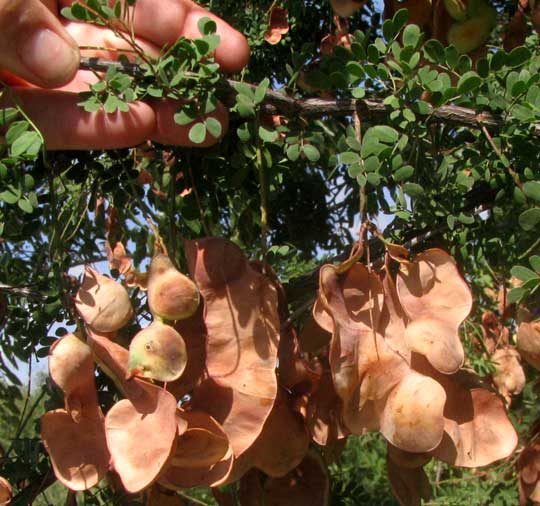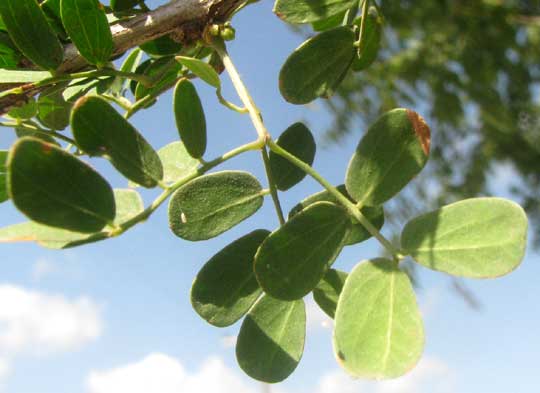Excerpts from Jim Conrad's
Naturalist Newsletter
from the July 13, 2014 Newsletter issued from the Frio Canyon Nature Education Center in the valley of the Dry Frio River in northern Uvalde County, southwestern Texas, on the southern border of the Edwards Plateau; elevation ~1750m (~5750 ft); N29.62°, W99.86°; USA
WRIGHT ACACIA FRUITING
At about belly height, leaning from a bushy fencerow in Cooks Slough Nature Park on the south side of Uvalde, down on the Coastal Plain, some unusual fruit pods caught my attention because of their paleness against a dark green background of leaves, and because they were shaped so unusually, as shown below:

These being flattish bean pods, and the compound leaves consisting of small leaflets, I figured we had a member of the Mimosa Tribe of the big Bean Family. Notice how the pods dangle in clusters. The really unusual feature, though, is how few beans were contained in each pod -- only two or three per pods -- and how deep are the sinuses between the bean-bearing segments. The temperature was in the mid 90s and I was blinded by sweat and cataracts, so I managed to photograph an apparently drought-stunted leaf not displaying the neat symmetry such twice-compound leaves should. Still, it displays the leaflets' shape and venation as you can see below:

With such unusual but well formed pods, or legumes, the bush or small tree revealed itself as...
*UPDATE: Lacking flowers, the broad, flat legumes and leaf form seemed like features of a Mimosa to me, and in 2014 I thought I had a Pink Mimosa. However, in 2024, with many more identification resources available, when I uploaded the pictures to iNaturalist, user "joshua_tx" recognized the Wright Acacia, SENEGALIA WRIGHTII. That species is distributed from south-central Texas into northeastern and central Mexico. In 2014, if I'd have identified the genus right, I would have called it Acacia greggii var. wrightii. However, now genetic studies have broken up the big genus Acacia, with our bush being assigned to the genus Senegalia. Also, nowadays that variety is raised to species level, so Senegalia wrightii.
This is a good example of how gene studies are shaking up the taxonomy world.